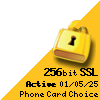How Do I Get An International Phone Card?

Getting connected internationally doesn’t have to be complicated. International phone cards remain a practical option for travelers and those maintaining connections across borders—especially when navigating areas with spotty service or when trying to avoid excessive carrier fees.
Understanding Your International Calling Options
When you’re planning international communication, phone cards offer a specific blend of reliability and cost control that’s worth considering. They work differently than your regular phone plan, creating a separate payment system that often delivers better international rates.
What’s particularly valuable about international phone cards is their straightforward approach. You purchase a specific amount of calling time upfront, then use a provided access number and PIN to place calls. This simplicity makes them accessible even if you’re in areas with limited technology infrastructure.
Many travelers overlook phone cards in the age of smartphones, which is understandable but potentially costly. The reality is that international roaming charges from major carriers can still accumulate surprisingly quickly. A phone card provides a predictable expense with no surprise bills waiting when you return home.
Types of International Phone Cards
International phone cards generally fall into four main categories, each serving slightly different needs:
Physcial calling cards these physical cards are typically found at convenience stores, grocery stores, and specialty shops. Like the other versions of calling cards below, they contain a specific dollar amount or minute allocation and work in the same way in terms of making a call.
Virtual calling cards follow the same general concept but exist entirely online. Rather than purchasing a physical card, you buy calling credits through a website or app, receiving access numbers and PINs electronically. These offer the advantage of immediate availability without needing to visit a physical store.
Rechargeable phone cards are calling cards that you can keep for multiple uses over an extended period of time.
Disposable phone cards are single-use phone cards that cannot be re-used.
The best choice often depends on your specific situation—how frequently you’ll call, which countries you’re connecting with, and your comfort with technology.
Where to Purchase International Phone Cards
Finding international phone cards is generally straightforward, though the quality and value can vary significantly between sources.
Physical retail locations offering phone cards typically include:
- Convenience stores
- Grocery stores (in the checkout or customer service areas)
- Pharmacies
- Specialty electronics shops
- International markets catering to immigrant communities
While they do offer some level of comfort knowing that a big brand physical store is selling this product, the risk is in fact higher since these stores no very little about the products themselves, meaning that you can get a calling card with hidden fees that the store may not be aware of, technical faults and on rare occasion already expired.
While you will be able to get a refund, the headache is for most people worth avoiding.
We recommend purchasing your phone card from a specialist retailer whether that be online or with a physical store since the staff will know the ins and outs of every single phone card and will be able to find the exact option you’re after rather than a lucky dip that general stores will offer.
Feel free to see our selection of phone cards here – simply select the country you wish to call to and click “Find”.
What’s interesting is that the best deals are frequently found in places serving communities with strong international ties. Small ethnic grocery stores and markets often carry cards with particularly good rates to specific countries, reflecting the calling patterns of their regular customers.
How to Choose the Right International Phone Card
Selecting the most appropriate phone card involves considering several factors that affect both value and usability. The process requires a bit more attention than simply grabbing the first card you see.
The most crucial factors to evaluate include:
Connection fees by themselves are to be avoided but if the connection fee offers a better call rate per minute then it may be worth looking at..
Maintenance fees might deduct money for periods of inactivity. Cards that subtract $0.50 or $1 per week when not in use can quickly diminish your balance if you’re an occasional caller.
Expiration dates vary widely between providers. Some cards maintain your balance for 3-6 months, while others might expire in as little as 30 days after first use.
Calling quality differs between providers based on the telecommunications networks they partner with. Lower-quality connections might offer cheaper rates but result in calls with delays, echoes, or drops.
Specific country rates can vary dramatically—a card offering excellent rates to India might provide poor value for calls to Brazil. The best card depends entirely on which countries you’ll be calling.
When evaluating these factors, think about your specific calling patterns. Do you make frequent brief calls or occasional lengthy ones? This behavioral pattern should influence which fee structure works best for your situation.
How to Use an International Phone Card
Using a phone card involves a few more steps than making a regular call, but the process becomes routine after your first attempt:
- Dial the access number provided on your card (often toll-free)
- When prompted, enter your PIN number – you will typically hear the call credit balance.
- At the next prompt, dial the international number including the country code – here you will typically hear your total time available for this call.
- Listen for confirmation before your call connects
Well, actually, the most efficient approach is to save these sequences in your contacts. Create a contact entry with the entire dialing sequence using commas to create pauses between the access number, PIN, and destination number. This transforms the multi-step process into a single-touch operation.
A few practical tips can help avoid common frustrations:
- Write down your PIN separately from the card as backup
- Check card policies about calling from mobile phones versus landlines
- Save the customer service number in case you encounter connection issues
Digital Alternatives to Traditional Phone Cards
While traditional phone cards continue to serve an important purpose, several digital alternatives have emerged that might better suit your needs depending on your circumstances.
Internet-based calling apps like WhatsApp, Skype, Viber, and Facebook Messenger provide free international calls when both parties have the app and an internet connection. These services offer excellent quality but require reliable data connectivity.
Mobile carrier international plans have become more competitive, with options like T-Mobile’s international coverage and AT&T’s International Day Pass. These provide simplicity but typically at higher costs than dedicated phone cards.
VoIP services such as Google Voice offer another alternative, providing reasonable international rates through internet-based calling that works through your existing devices.
The decision between these alternatives and traditional phone cards often comes down to:
- The reliability of internet access in your destination
- Whether the people you’re calling have compatible technology
- Your comfort level with digital solutions versus more straightforward options
Making the Right Choice for Your Situation
International communication needs vary tremendously between travelers. A business traveler making brief calls to the home office has different requirements than someone staying abroad for months and making lengthy calls to family.
For occasional or emergency use, a basic prepaid card with a longer expiration period makes the most sense—even if the per-minute rate isn’t the absolute lowest. This provides peace of mind without ongoing costs.
For regular calling to specific countries, researching cards with the best rates to those particular destinations will yield significant savings over time. The difference between carriers can be substantial—rates to the same country might range from 2¢ to 20¢ per minute depending on the provider.
The most balanced approach often involves maintaining two options: a phone card for reliability when other systems fail, and a digital solution like WhatsApp for free calling when conditions permit.
Whatever option you choose, taking the time to understand the fee structure and terms before purchasing will help avoid disappointment and ensure you stay connected at the best possible rates during your international travels.

